
|
1
Mouse-click on any photograph for enlargement. 2 Photographs are courtesy of Adam Walker except where indicated by "GS" (Greg Slayden) or "RW" (Rob Woodall). 3 Mouse-click on any peak name or its location in the route map to read the corresponding story. Petter Bjørstad's expedition trip report Rob Woodall's expedition trip report Adam Walker's expedition trip report |
Rob Woodall's photo albums Adam Walker's photo album Greg Slayden's photo album Adam Walker's Aconcagua video These photo album and video links may eventually fail because their sponsoring companies can summarily change their addresses without notification. Notify me of any altered addresses. |

|
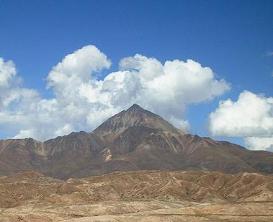
|
|
Cerro Chorolque - one of 4 planned "ultra" peaks. (RW) |
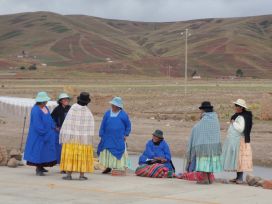
|
| Bolivian women in traditional dress. |
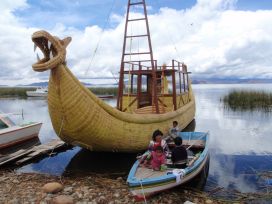
|
|
Reed boat on Lake Titicaca - at some 12,500 feet the Earth's highest navigable lake. |
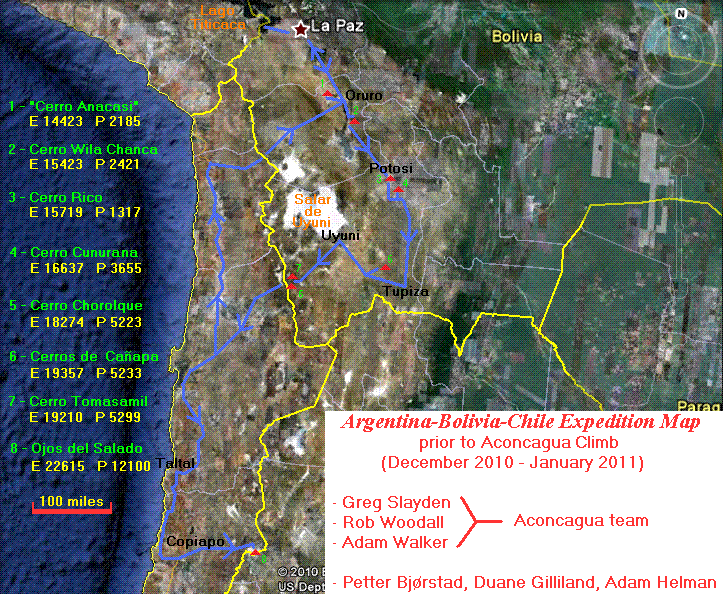
|
|
The overall driving route excluding Aconcagua. We start on the Bolivian Altiplano before heading west and then south for the main goal - Chile's Ojos del Salado. Mouse-click on any peak icon to read the corresponding story. Mouse-click on any peak name or value at left for information at Greg's peakbagger.com website. Elevations (E) and prominences (P) are in feet. |

|
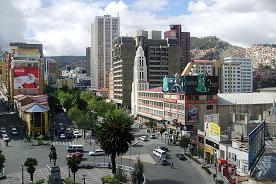
|
|
Downtown La Paz from our 7th floor window. (RW) |
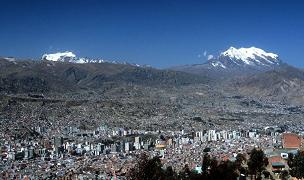
|
|
La Paz suddenly appears when you descend to city-center from El Alto. Flat Mururata is at left (19,252 feet); Nevado Illimani at right (21,201 feet). |
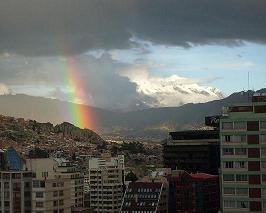
|
|
Early evening view of Nevado Illimani (RW) |

|
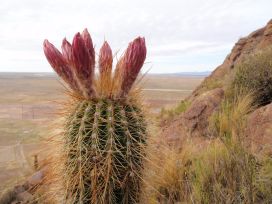
|
|
Flowering cactus near the base of "Cerro Anacasi". |

|
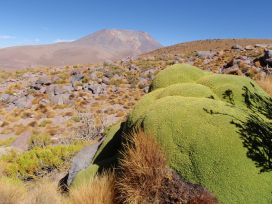
|
|
The rock-like yareta plant was seen from about 15,000 to over 16,000 feet. |

|
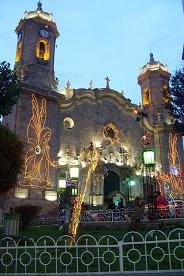
|
|
New Year celebration in a Potosi public square. (RW) |

|
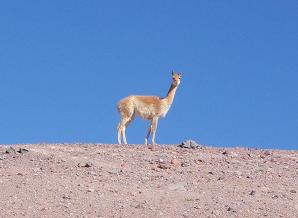
|
|
A vicuña is more slender than the typical llama or alpaca. |

|
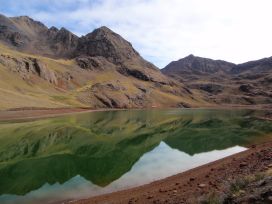
|
|
A pretty lake colored (read: poisoned) by mine tailings at 15,000 feet elevation near our trailhead. |
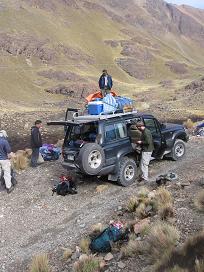
|
|
Off-loading people and packs. Driver Luis is on the roof. (GS) |

|
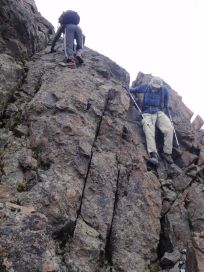
|
|
Steep section. Adam at top; Duane at lower right. |
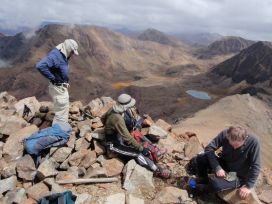
|
| Cerro Cunurana summit |

|
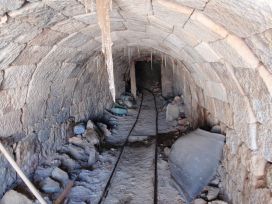
|
| Icy mine high on Chorolque. |
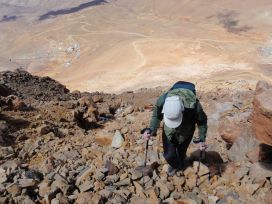
|
|
Greg in his "private hell" climbing Chorolque just 4 days from sea level. |
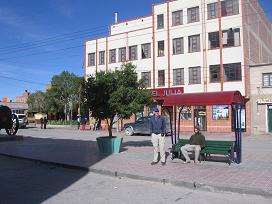
|
|
Main street in Uyuni. Duane is standing; Adam W. seated. (GS) |
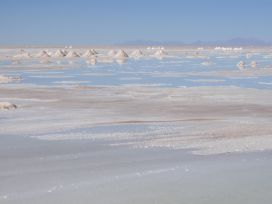
|
| Salar de Uyuni |

|
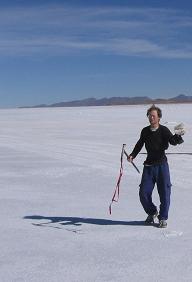
|
|
Adam with raw salt - some taken back home. (GS) |
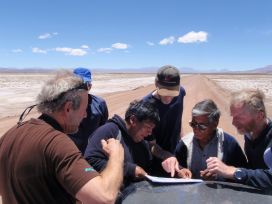
|
|
Intense road navigation discussion somewhere between Uyuni and Chile. |

|

|
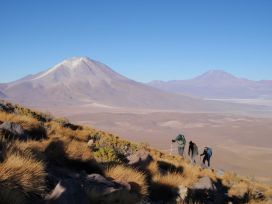
|
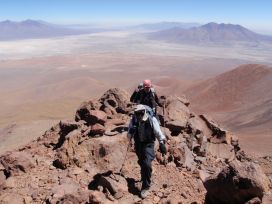
|
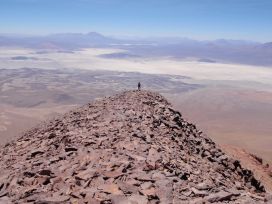
|
|
Ascending Cerro Tomasamil with Volcan Ollague background. |
Duane and Petter at about 18,000 feet on Cerro Tomasamil. |
Descent on the summit ridge emphasizes southwest Bolivia's vast emptiness. |
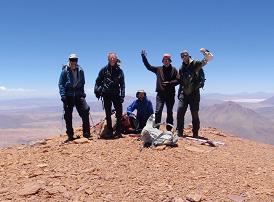
|
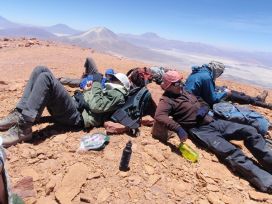
|
| Upon arrival at Tomasamil's summit. | A short while later... |

|
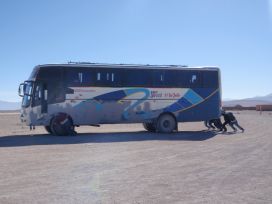
|
|
Pushing a bus to get it re-started at the Bolivia/Chile border crossing. |
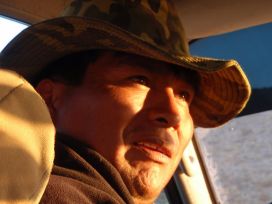
|
| Germán the "second" driver |
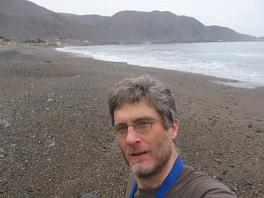
|
|
Greg at the Pacific Ocean before heading to over 22,000 feet. (GS) |
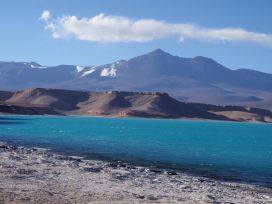
|
|
Laguna Verde at 14,300 feet near the main road leading to Argentina. |

|
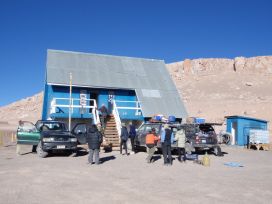
|
| Camp "Lucia" at 14,800 feet. |
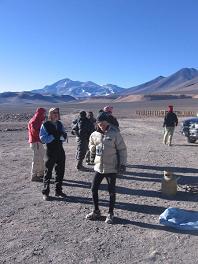
|
| Lucia hut view of the target. (GS) |
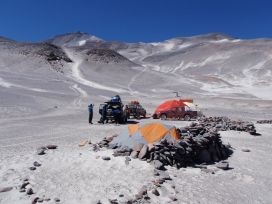
|
|
Camp Atacama with a pair of large hemispherical tents. Summit is at upper left. Wind howls from the Pacific (at right) accounting for the rock windbreaks. |
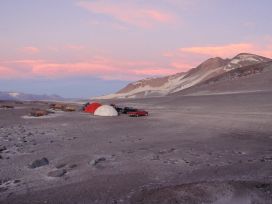
|
|
Sunset - Camp Atacama. Despite 17,050 feet it is desert - complete with sandstorms. |
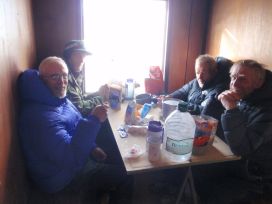
|
|
The evening meal at Camp Tejos, a 19,100 foot high shipping container. From viewer's left - Duane, Greg (rear), Petter and Rob. |
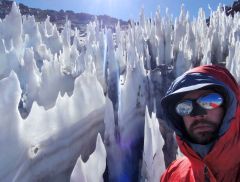
|
| Neve penitentes with Adam Walker. |
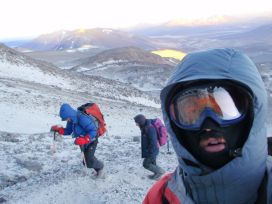
|
|
Early-on during Ojos summit day; Adam Walker self-portrait. |

|
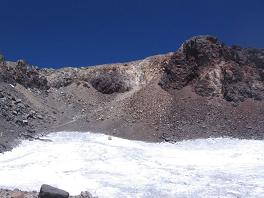
|
| Inside the summit crater. (GS) |
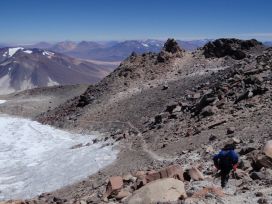
|
|
The path is explicit and snow-free. |
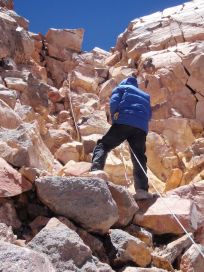
|
|
Steep, protected section very near the summit. |
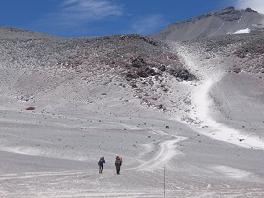
|
|
Adam (left) and Luis depart base camp for Camp Tejos. Summit is at upper right. (GS) |

|
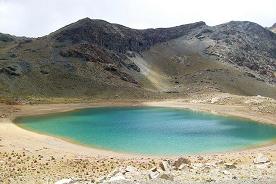
|
|
High altitude pond just beyond our Cerro Cunurana trailhead. (RW) |

|
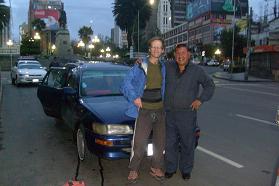
|
| Adam and Walter the taxi driver (RW) |

|
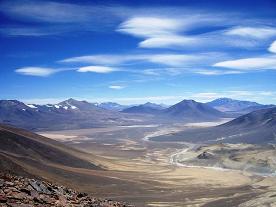
|
|
View northeast from Cerro Vicuñas - a "bonus peak" after Ojos del Salado. The clouds were well-displayed on this very windy day. (RW) |

|

|
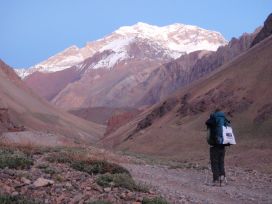
|
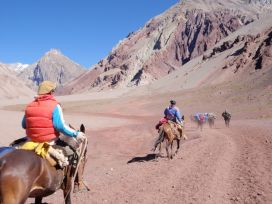
|
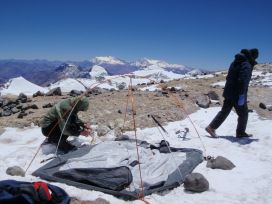
|
|
Long journey ahead for Greg with Aconcagua as huge background. |
A mule train heads up to Aconcagua base camp. |
Tent assembly at 18,000 feet - Nido de Condores on Aconcagua. |
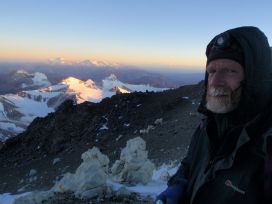
|
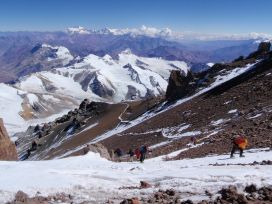
|
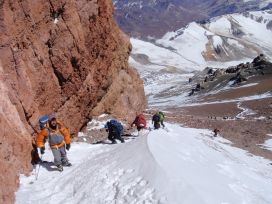
|
| Rob at dawn on Summit Day. It's cold! |
Above the (snow-free) Gran Traversia; Mercedario in background (21,981 feet). |
Climbing the infamous Canaleta at over 22,000 feet. |
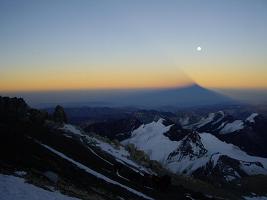
|
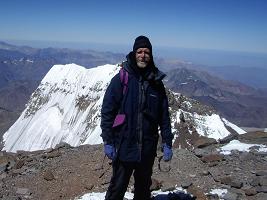
|
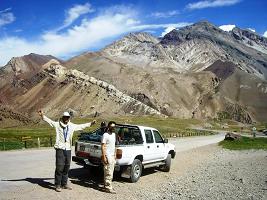
|
|
Aconcagua's long shadow at sunrise. (RW) |
Rob atop the summit plateau. (RW) |
Greg (left) and Adam W. celebrate their trailhead return. (RW) |
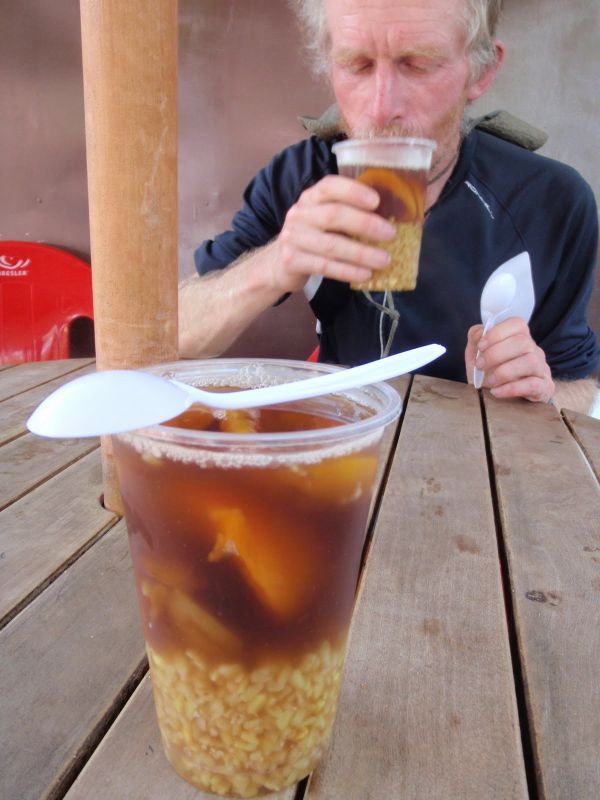
|
|
Just reward - Rob enjoys Santiago "tea" after climbing Aconcagua. It's actually apricot juice with whole pieces and a layer of soaked wheat. |